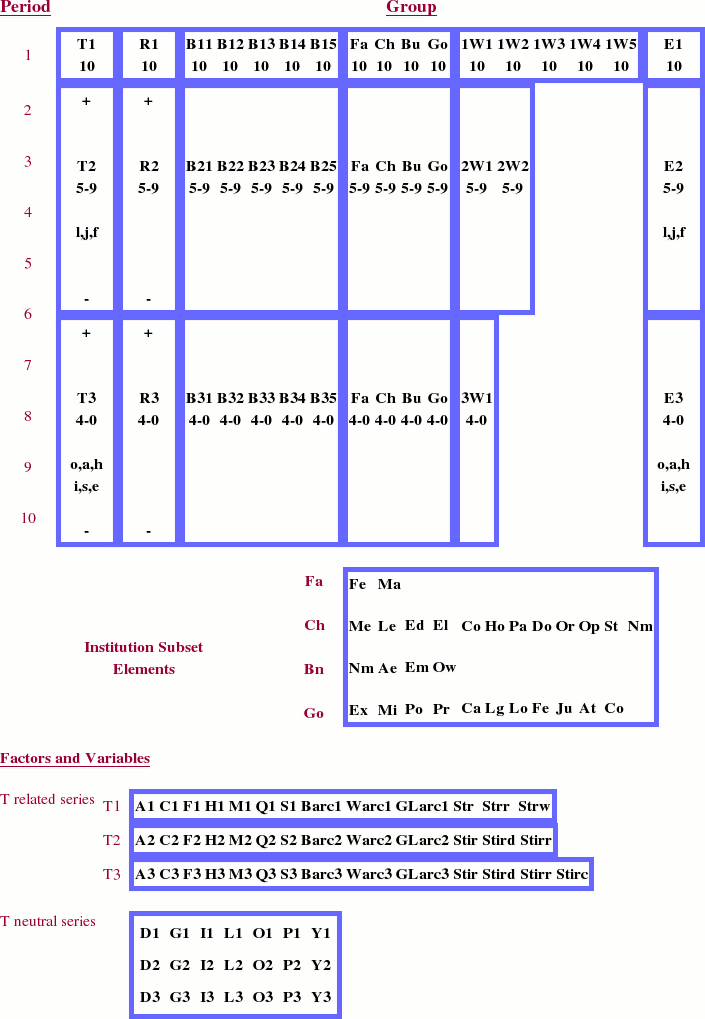Periodic Table of the Elements,
Factors & Variables
of
Systematic Political Science
—ALL
RIGHTS RESERVED ©2005 DALLAS F. BELL, JR—

Understanding Individual and Societal Behavior Quantitatively:
The Fundamentals of Modeling
by Dallas F. Bell,
Jr.
The Periodic Table of the Elements, Factors, and Variables of Systematic
Political Science indicate that individual and societal behavior can be
quantitatively studied much like chemistry. The map is made using the META
game theory format. The elements are measured and aided with fuzzy analysis by
the goals of compliance with and actual compliance with the constants of
Natural Laws of the Free-will, NLF-stoichiometry.
Modeling is the application of these standards and methodology to create or
validate with logical representations individual and societal behavior. The
goal is to reach an eigenstate where the position level is 100% known and the
momentum is parallel to the T propagation direction. This cognitive approach
reduces data and possibilities into empirical factual knowledge. Agent-based
modeling must assume that individuals and institutions are autonomous agents
having an internal model governing the rules of behavior derived from the T
belief.
Tools such as Latent Semantic Analysis, LSA, can be helpful in confirming
positions. Since all behavior extends from the T belief, language will express
that relationship. For example, the linguistic need to describe a perceived
fortunate circumstance may be characterized as being blessed. That
word
describes the good was obtained from the infinite God of justice and mercy by
unmerited grace. Other words such as luck, the gods smiled,
or chance describe
characteristics of other theological beliefs.
Even at this fledgling state of modeling we can now grow more confident in
the benevolent understanding and prediction of individual and societal
behavior.
—ALL RIGHTS RESERVED
©2005 DALLAS F. BELL, JR—
|
